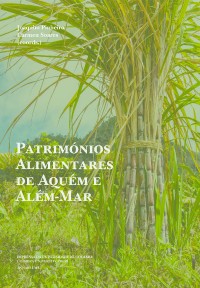Please use this identifier to cite or link to this item:
https://hdl.handle.net/10316.2/39613| Title: | Le pain bouilli (po buli) des montagnards alpins: techniques et traditions à Villar-d’Arêne/France | Other Titles: | Boiled bread (po buli) of the alpine mountaineers: techniques and traditions at Villar-d’Arêne/France | Authors: | Escallier, Christine | Keywords: | Black bread;boiled bread;po buli;Villar-d’Arêne;France;Pain noir;pain bouilli;po buli;Villar-d’Arêne;France | Issue Date: | 2016 | Publisher: | Imprensa da Universidade de Coimbra Annablume |
Journal: | http://hdl.handle.net/10316.2/39609 | Abstract: | Snowy winters isolate the Alpine villages from the rest of the world for months.
The villagers at Villar-d’Arêne, French Alps, adapt to difficulties in supply when roads are impassable, preventing the passage of traditional peddlers. This self-sufficiency requires a regulation of goods produced and consumed. Thus, once a year, villagers gather at the communal oven and produce the traditional
rye bread - po - whose originality comes from its dough worked with boiling water
- buli - which keeps the product stable for twelve months.
Over the three days and three nights during which the aforementioned event1 runs,
Villar-d’Arêne comes alive. While men knead and bake bread, women prepare festive
dishes in their kitchen, which will be jointly consumed. Collective rituals and games
accompany the occasion. Youth in infernal band made the charivari until dawn.
Drawing originally on an ethnographic study carried out during a year, this article
is intended to describe the preparation ritual of boiled rye bread, endogenous
product of a mountain land, encouraging the sharing, the transmission of ancestral
knowledge as well the preservation Les hivers enneigés isolent les villages alpins du reste du monde durant des mois. Ainsi, une fois par an, des villageois se réunissent au four communal et fabriquent le traditionnel pain de seigle - po - dont l’originalité vient de sa pâte travaillée avec de l’eau bouillante - buli - qui maintient stable le produit durant douze mois. Au cours des trois jours et trois nuits durant lesquels se déroule l’événement relaté ici1, Villar-d’Arêne s’anime. Tandis que les hommes pétrissent et cuisent le pain, les femmes préparent des mets festifs dans leur cuisine qui seront consommés en partage. Rituels collectifs et jeux accompagnent l’occasion. La jeunesse, en bande infernale, fait le charivari jusqu’à l’aube. A l’origine d’une étude ethnographique réalisée durant une année, cet article a pour objet de décrire la préparation ritualisée du pain de seigle bouilli, produit endogène des terres montagnardes, encourageant le partage, la transmission des savoirs ancestraux ainsi que la préservation d’un patrimoine immatériel (techniques, rites), pilier de l’identité culturelle régionale. |
URI: | https://hdl.handle.net/10316.2/39613 | ISBN: | 978-989-26-1190-7 978-989-26-1191-4 (PDF) |
DOI: | 10.14195/978-989-26-1191-4_4 | Rights: | open access |
| Appears in Collections: | Patrimónios alimentares de aquém e além-mar |
Files in This Item:
| File | Description | Size | Format | |
|---|---|---|---|---|
| le_pain_bouilli.pdf | 13.59 MB | Adobe PDF |  |
Items in DSpace are protected by copyright, with all rights reserved, unless otherwise indicated.
